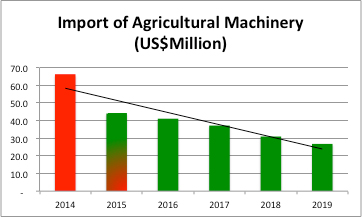Dear Editor,
There is certainly a buzz around the phrase, “decade of development”. What is a “decade of development” from a Guyanese perspective and who can best launch it?
To answer these questions one has to look at the concept of what it does to free a nation from its shackles. How about a Guyana that uses its natural resources and wealth to lift all boats (in this case our people) economically, socially and mentally? How about using the resources of the State to show the entire nation how “not to practice” nepotism, favouritism, and political marginalization so that more of our people can be empowered to live a more dignified life and are allowed to get ahead based on merit rather than which political leader you are connected to? How about harnessing the dwindling entrepreneurial skills to unleash the nation’s true potential?
While one can find very little to disagree with on this concept, one has to be aware that not any person can proceed along this path. You must have a track record of human development to give credibility to your agenda. Therefore it is imperative to examine the record of Mr. David Granger over the last 4 years and 6 months to conclude if he does have the credibility to speak of a “decade of development”. I will use two examples today only because of space, but I have more than 120 other examples to support my conclusion that he is unsuitable to lead Guyana ever again.
Rural Guyana – sugar is intertwined with the livelihood of the people in rural Berbice and Demerara, yet Mr. Granger chose to ignore the conclusions of his COI and shut down 4 factories. Any child could have told him that the outcome from that decision would have created a socio-economic implosion in rural areas. The outcome of that Granger decision was the drastic reduction in sugar production, which at the end of 2019 was only 90,246 tonnes (59% decline from 2014), the lowest production since 1926. In the last full year of the PPP/C Government, sugar production was 216,186 tonnes and in those days that was considered poor production. Today the head office cost at GuySuCo is now 34% of total operating cost compared to 20% in 2014 and this strategy of Mr. Granger was designed to make the industry more efficient? The human development wreckage left in the wake of Mr. Granger’s decision was nothing but heartless and inhumane.
Investments in agriculture – The graph below as sourced from the Bank of Guyana illustrates the situation with respect to the importation of agricultural machinery. Investing in capital equipment is a pre-requisite for the development of any economy and in Guyana’s case, the agriculture sector is key. The importation of agriculture machinery declined by some US$30 million since Mr. Granger took over. Even the worst of the PPP Presidents (Mr. Ramotar) achieved better results.
With the agriculture sector being one of the main employers and the reason for our future, it must play a crucial role in promoting human development and contributing to the reduction of poverty. Any investment in this sector is vital but the evidence reveals it is not happening under Mr. Granger because the farmers have no confidence in him. Such a situation has contributed to an increase in economic disparity and human deprivation that now exist in at least 1 in 4 homes across the nation.
So while Mr. Granger talks about the “good life”, the reality for the ordinary people illustrates something very different.
The facts will show that after spending more than G$1,400 billion over the last half of a decade, Mr. Granger has very little to show as newly conceived projects. All he has done was spend money on completed PPP/C conceived projects and on his coterie of advisors. He can claim D’Urban Park, but can the Guyanese people eat D’Urban Park? Does it give them health, strength, wealth, wisdom and happiness? Mr. Granger has left a legacy where his version of the “economic trickle-down” has left the widest gap between the rich and the poor in the entire history since independence.
Yours faithfully,
Sasenarine Singh






